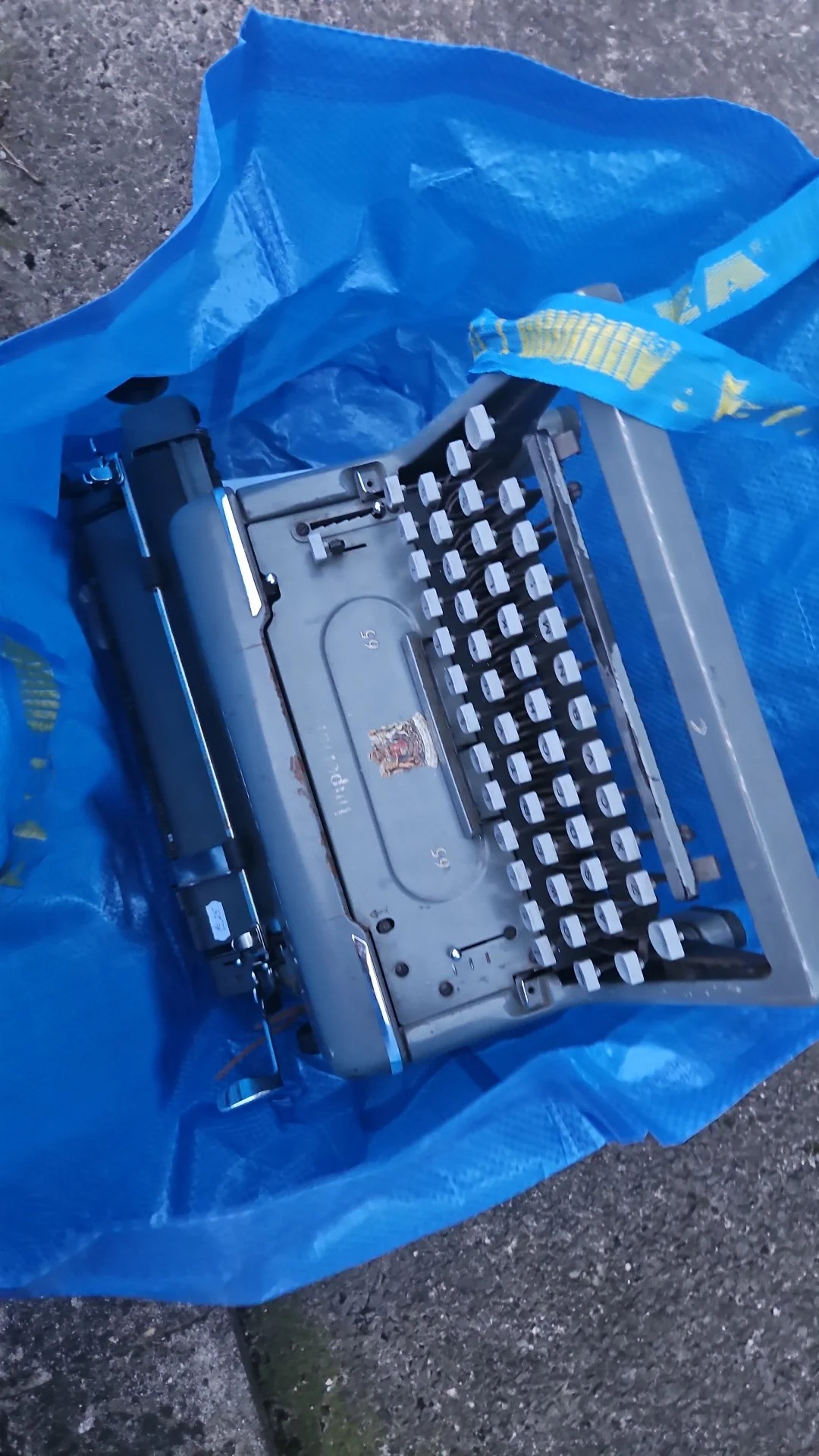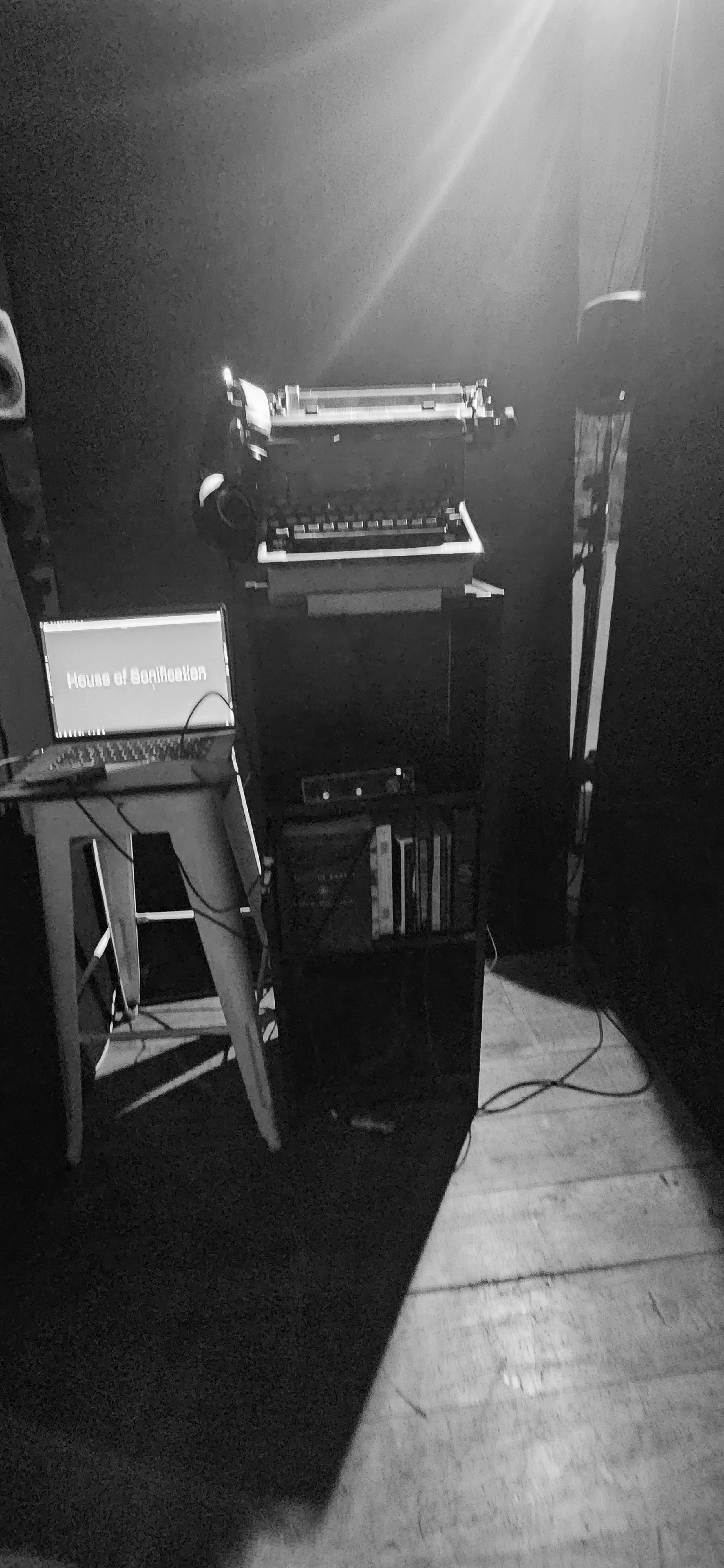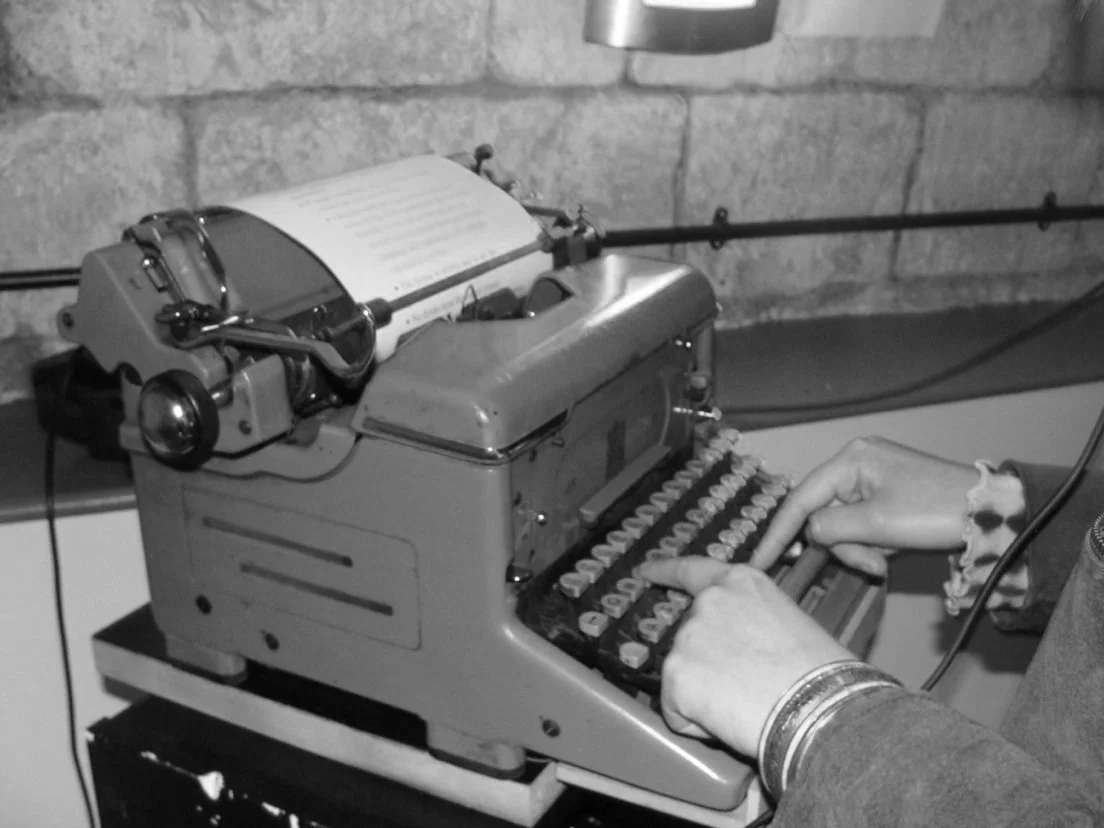ZAMPANO'S TYPEWRITER
Independent Study
ZAMPANO'S TYPEWRITER Independent Study
At the intersection of time and space, stands a House that listens to neither. Infinite corridors and halls stretch out into the horizon and the essence of their existence has been distilled into this artifact.
Standing atop a bookshelf arranged with inspirational literature stands a typewriter with a custom made midi controller underneath. Using the typewriter shapes and modifies an ambience designed to immerse users in the final act of the horror fiction novel House of Leaves (2000) by Mark Z Danielewski. Zampano’s Typewriter pays homage to the author via the name and themes being portrayed by the sound art installation.
Liminality
Sits between everything. It is the space in between its purpose or the transitional state of any being. Classified by the eerie feeling of not belonging, or the uncanny sensation of being somewhere where you sociality shouldn’t be. Liminality is the main theme of Zampano’s Typewriter. His typewriter creates the ambience of liminal space by typing, but not just any liminal space. This typewriter sonifies the impossible geometry of the House of Leaves.
Connecting to House of Leaves
This entire project started with one book, House of Leaves (2000) by Mark Z Danielewski. His works all have a degree of experimental nature, but House of Leaves is by far the most groundbreaking from what I have read. It layers story after story on top of each other with the narrative focus shifting sometimes as frequently as multiple times per page. Much like the House inside the innermost layer of the novel (The Navidson Records), the book is designed to confuse readers. My time with the book was filled with rereading because I was never able to get comfortable with the text, it constantly felt like I was in-between two spaces. To capture this sensation and the ambience of the most intense scenes in House of Leaves, I created a sonic typewriter. The name ‘Zampano’s Typewriter’ refers to one of the fictional authors that is credited for drafting the academic papers that analyse The Navidson Record videos. From my understanding, there is no direct connection to Zampano owning a typewriter to analyse the fictious documentary, it is simply the way I chose to link the name of the art piece to the muse.
The construction of the typewriter internals was months in the making.
When choosing the correct typewriter for the project, I consulted the Metal Workshop Technician at Locksbrook Campus, who so happens to collect typewriters, and he was able to point me in the right direction of what and where to look. After mentioning a charity shop nearby that he saw one at, I acquired a 1953 Imperial 65 stationary typewriter.
The internals was a labour of love and by far the most time-consuming piece to finish. Seen in the top left, was a prototype used to figure out the coding and max implementation for the switches. This slowly developed into what can be seen below, with rails of switches connected to a wooden baseboard and a sea of wires connecting to the Arduino and breadboard. The engineering may not be bullet proof, but this documents my first expedition into the world of electronics and coding, and there is tangible proof of my development with soldering and general understanding of using micro controllers.
When It’s Completed Not Finished
The completed version of the typewriter “brain” as I have called it during development, serves its purpose as a way for the analog typewriter to communicate to the audio engine built in Max 9. Yet, it is not the last of my iterations on the typewriter. New literature will inspire new ways to interact with a tangible sonification tool. This is how liminality inspired a variation on a sonic typewriter, even the unintentional breaking of the pieces follows the thematic reference of the piece.
The Sound
Using the performative instrument built in Sonic Performance, I captured the audio I would recontextualize and morph into the horror ambiences of House of Leaves. Zampano’s Typewriter utilizes reverb stacking to create continuously morphing spaces and it starts at the beginning with a pedal board setup connected to a prepared guitar. The connected contact mics and built in pick ups capture rumbling bass and the overhead mics pickup the high ends and vocals. Singing with the guitar neck against my throat produced the tonally dense base ambience and the scattered objects attached to the guitar made the accenting sounds that are triggered by the typewriter keys. To produce a spectrally complex ambience, the singing bowls accompany my pitch shifted vocals in the high end while a synthetic bass produced from early prototypes of the typewriter max patch cover the lower frequencies. Alongside the ambience are sounds of the typewriter in use while the audience member interacts with the piece to give a sense of feedback while playing.
Zampano’s Typewriter Installation Highlights
This is a condensed version of an original 3 hour and 26-minute-long recording of people interacting with Zampano’s Typewriter. By scanning the track with a spectrogram, I was able to find the sections that included human input marked by the sudden spikes of sound from the typewriter sound user feedback.
RELOOPED
May 21st, 2025
Venue
Burdall’s Yard
The first of two showcases. Relooped was the first time that Zampano’s Typewriter was shown to the public. Surrounded by 3 black flats, and a 4-speaker set up, participants entered the space and became immediately surrounded by the intense soundscape of their own design.
CMT Degree Show
June 4th, 2025
Venue
Burdall’s Yard
The Degree Show featured Zampano’s Typewriter in a slightly different light. More refined and minimalistic with just the bookshelf, typewriter, and laptop in a corner with headphones. With other exhibitions being shown and a desire to simplify the installation, headphones became the only option, and they greatly intensify the sense of isolation the installation is aiming to instil.
Audio Demonstrations
A demonstration video of how I as the creator interact with the piece versus how a general audience member might interact with the piece. Not one person will do the same thing, nor will they be likely of replicating what was already played.Existing Work
LOOK MUM NO COMPUTER
Sam Battle’s (Look Mum No Computer) This Museum Is (Not) Obsolete is an art exhibit dedicated to showing off experimental music technology. Much like Zampano’s Typewriter, it is self-guided, and guests are welcomed to interact with the technology. Both of our practices run the line of repurposing other objects into musical devices. My work from a certain point of view, can be seen as a singular instance of Battle’s much larger discography of sound art installations. One particular installation construction I find particularly relevant is the Furby Organ. While it is far more complex than Zampano’s Typewriter, it utilizes a semi-modular system of 44 Furbies circuit bended to perform sonic material. I see a similar design choice within the switches of the typewriter. They each serve individual purposes in a greater design.
Opening Graphic to Sam Battle’s (This Museum Is (Not) Obsolete, 2025)
This museum is (Not) obsolete (no date). https://this-museum-is-not-obsolete.com/.
Furby Organ (LOOK MUM NO COMPUTER, 2018)
STUFF - LOOK MUM NO COMPUTER (2018). https://www.lookmumnocomputer.com/furby-organ.
Kathy Hinde: Twittering Machine
Kathy Hinde has been producing work in the Sound Art industry since 2004, but I wanted to make a special mention to her 2019 installation of Twittering Machines. Now Kathy has her work self described as “installations that are a cross between kinetic sound sculptures and a newly invented musical instrument which can become a site for live performance and improvisation.” (Hinde, 2025). This exact sentence encapsulates a lot of the ideas I brought forth as an artist for Zampano’s Typewriter. While I did not perform my sonic typewriter as a live performance, the interaction point from the audience was improvising with the typewriter as an instrument to create ambiences. Thematically, there is a definite fork in the road between our two styles. Kathy tends to explore nature grounded ambience whereas I take the tone of synthetic and embodying horror spaces. Even still, Zampano’s Typewriter shares two of the same elements, granulation and singing bowls, but we both took those tools and used them to create drastically different themes.
Photo: Hugo Sousa at Gnration, Braga
Twittering Machines live : 2019 (2025). https://kathyhinde.co.uk/work/twittering-machines-live-av/.
About - Kathy Hinde (2025). https://kathyhinde.co.uk/about/.





















